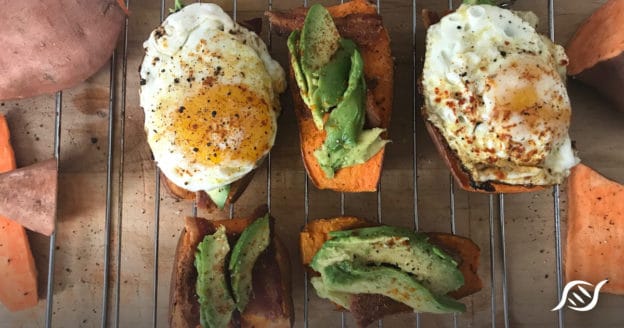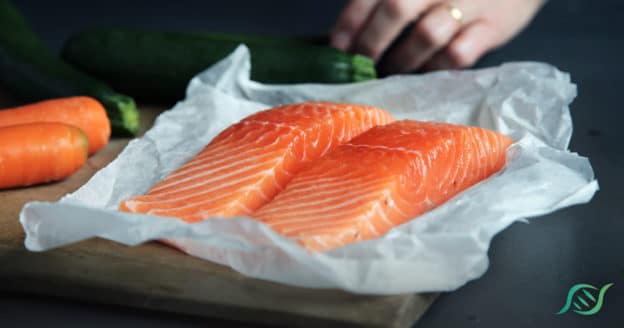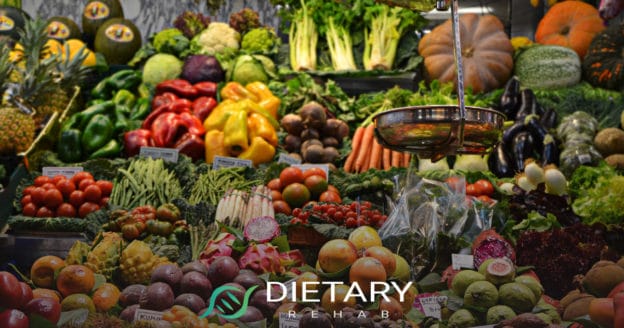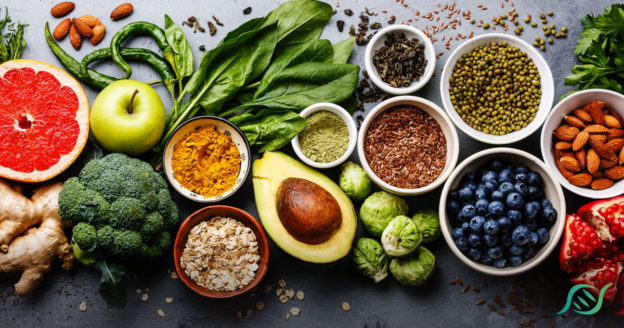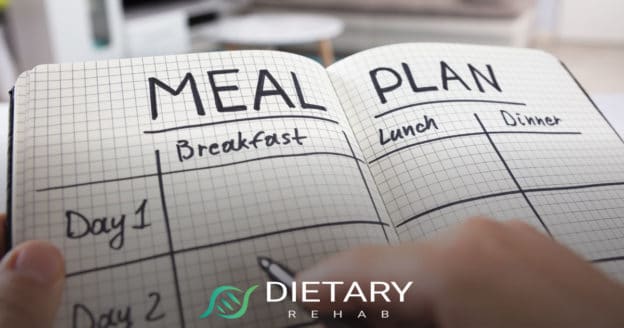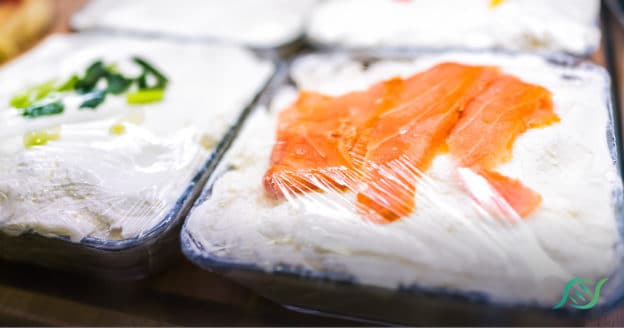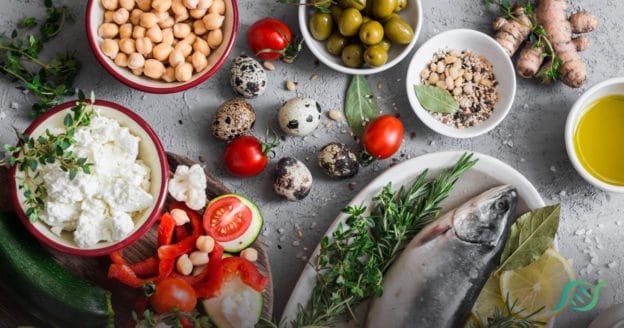Holiday Baking – Paleo Diet Style
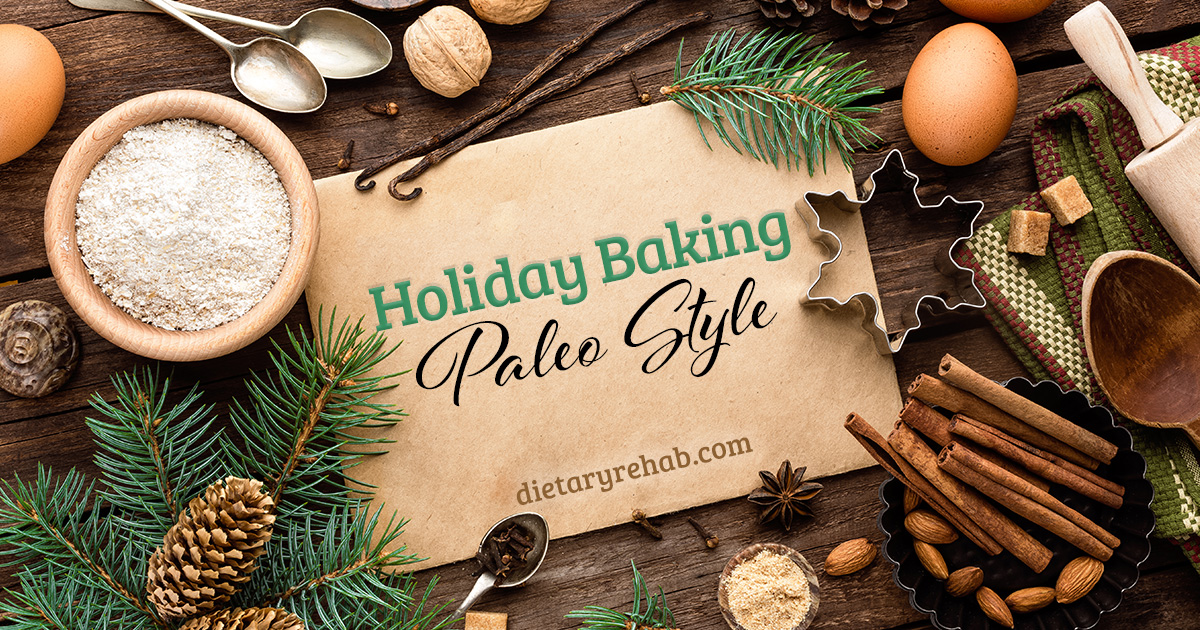
Ah, the Holidays! Wonderful, sweet memories of baking pumpkin pies and gingerbread men with your grandmother. Now that you’re on the Paleo Diet, you have to give up all those goodies, right? Guess again! Here are a few yummy recipes to try. And don’t forget: modifying the recipes for your taste or preferences is definitely allowed!!
Paleo Pumpkin Pie Bars
With Thanksgiving coming just around the corner, I thought this would be a tasty alternative to the traditional pumpkin pie. You can play around with the spice amounts and make this recipe your own.
For the Crust:
- 6 dates, pits removed
- 1 cup almond butter
- 2 eggs
- 2 tablespoon honey
- 1 teaspoon vanilla extract
- 1 teaspoon cinnamon
- Pinch of salt
For the Filling:
- 1 can (14oz) pumpkin puree
- ½ cup canned coconut milk
- ¼ cup coconut cream concentrate or homemade coconut butter*, melted just to soften
- 3 tablespoon maple syrup
- 1 teaspoon cinnamon
- ¼ teaspoon nutmeg
- 1/8 teaspoon allspice
- 1/8 teaspoon ground ginger
- 1/16 teaspoon cloves (don’t bother measuring, just shake)
- Pinch of salt
For the Topping:
- ½ cup pecans roughly chopped
- 2 tablespoon coconut oil
- 2 tablespoon maple syrup
- ½ teaspoon cinnamon
- Pinch of salt
Instructions:
- Preheat oven to 350 degrees F. First the crust: add pitted dates and almond butter into food processor. Pulse until it breaks down together.
- Add the rest of the ingredients for the crust and puree until smooth.
- Grease an 8×8 pan with coconut oil and pour your mixture in, smoothing and leveling it out. Place in oven for 12-15 minutes or until firm and toothpick comes out clean. Let cool.
- While crust is baking, mix your filling ingredients into the food processer until pureed, incorporating the coconut concentrate/butter. It shouldn’t be chunky.
- When the crust is cooled, add your pumpkin puree on top, smoothing and leveling again
- Now your topping: add the coconut oil to a pan to heat under medium heat. Add your chopped pecans stirring constantly as they will burn easily. Add the remaining ingredients while stirring to prevent burning the pecans. Roast for about 3-4 minutes.
- Pour pecan mixture onto the puree and smooth out. Put into freezer for 20+ minutes
- Cut and serve. Keep refrigerated or in freezer to keep intact and from melting
*To make your own coconut butter, just get a bag of coconut flakes and put in the food processor. Process for about 8-10 minutes, scraping the sides occasionally. Done.
Brownie Eggnog Pumpkin Pie
If you would prefer a more traditional pie, but still want to do Paleo, never fear! There are lots of wonderful Paleo recipes for pumpkin pie, like this one:
For the Filling:
- 1 can (14oz) pumpkin puree
- 1 cup coconut or almond milk eggnog
- 2 eggs
- ½ cup coconut sugar
- 1 teaspoon vanilla extract
- 1 teaspoon pumpkin pie spice*
- Pinch of salt
For the Brownies:
- 15 dates, pitted
- ¼ cup coconut oil, melted
- ¼ cup unsweetened cocoa powder
- 3 eggs, whisked
- 2 tablespoon coconut flour
- 2 tablespoon honey
- 1 teaspoon vanilla extract
- ¼ teaspoon baking soda
- ¼ teaspoon baking powder
- Pinch of salt
Instructions
- Preheat oven to 375 degrees F. Grease a pie plate with coconut oil
- Place all filling ingredients in a food processor and blend till smooth. Pour into a bowl and set aside. Wipe out food processer (doesn’t have to be super clean).
- Add dates to food processor and pulse until a clumpy paste forms
- Add coconut oil and cocoa powder, puree until well mixed and it has become smoother
- Finally add remaining ingredients and blend until smooth, about two minutes
- Spread half the brownie mixture into the bottom of the pie pan, smoothing it out to the sides.
- Pour pumpkin mixture on top.
- Lastly, add the remaining brownie mixture by the spoonfuls on top and swirl around with a knife. The brownie mixture will be sticky and not swirl easily.
- Place pie on baking sheet in oven and bake for 1 hour
- Let rest for about 20 minutes and then place in refrigerator for 2 hours before serving.
*If you have all the regular spices, you can use those instead in the traditional amounts or use the amounts from the pumpkin pie bars recipe above. And if you are using the pumpkin pie spice this recipe calls for, I recommend using a bit more than they ask for.
I added this one in, because we all love chocolate chip cookies and who doesn’t love bacon?
Paleo Chocolate Chip Bacon Cookies
Yes, you read that right! Paleo allows dark chocolate and of course, BACON!! Now we can put two of our favorite foods together and have the king of all comfort foods! I realize it is not a traditional holiday cookie, however, bacon! We require:
For the Dough:
- 3 cups almond flour
- 2/3 cups tapioca flour
- ½ teaspoon baking soda
- ½ teaspoon salt
- 2 eggs
- ½ cup maple syrup
- 1 ½ teaspoon vanilla extract
- ½ bag of dark chocolate chips
- [h2] For the bacon:
- 5 slices thick bacon
- 1 tablespoon maple syrup
Instructions
- Preheat oven to 400 degrees F. Prepare the bacon: put the bacon into a bowl and coat with the maple syrup, using fingers is probably best. Place on a baking sheet and put into oven. Bake for 5 minutes. Turn the bacon over and give it another 5 minutes. Take out, let cool on baking sheet and lower the oven temperature to 375 degrees F. The bacon will crisp up as it cools and add a delightful crunch to the cookies!
- In a medium mixing bowl, mix together the dry ingredients. In a smaller bowl, mix together the wet ingredients until fully mixed. When done, add the wet ingredients to the dry ingredients and mix well.
- Once the bacon has cooled, cut into chocolate chip sized pieces and add to the mixture along with the chocolate chips.
- Roll your dough into 1 inch balls and place on a lined baking sheet. Flatten slightly with the back of a spoon. Bake for 10-12 minutes. Makes about 18 cookies.
You could replace the maple syrup with agave syrup, but it will change the flavor a bit. If coconut flour is less expensive in your area, try using that instead. These cookies are well worth a try and are a great addition to the holidays! Any holidays. Birthdays. Late night snack. Whatever. Mmmmmm, bacon.

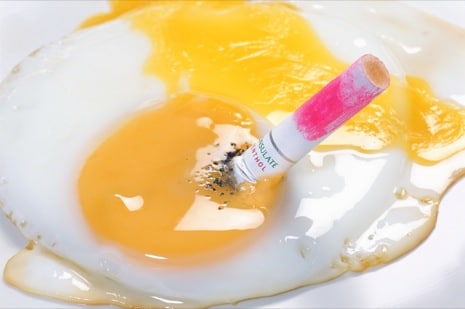
 As we discussed in part 1, the biggest issue with Dr. Dipasquale’s original recommendations are again lack of specificity and quality. This problem gets compounded on the weekend carb load, due to the much higher amount of food and the very pronounced hormonal response that the weekend foods illicit. In fact, far from being the gluttonous period of gastronomic debauchery that so many Anabolic Diet practitioners see it as, the weekend phase is actually quite hormonally and biochemically complex. What was originally marketed as “anything you want for 36-48 hours is really best broken down into three distinct phases which correspond to the body’s continually changing hormonal environment in response to the weekend foods. In order to really get the most out of the Anabolic Diet in physique development, careful attention should be paid to these phases. I will break down each phase, explain what you need to eat in the phase, why, and how long it needs to be. We will then put it together for a comprehensive overview of the weekend.
As we discussed in part 1, the biggest issue with Dr. Dipasquale’s original recommendations are again lack of specificity and quality. This problem gets compounded on the weekend carb load, due to the much higher amount of food and the very pronounced hormonal response that the weekend foods illicit. In fact, far from being the gluttonous period of gastronomic debauchery that so many Anabolic Diet practitioners see it as, the weekend phase is actually quite hormonally and biochemically complex. What was originally marketed as “anything you want for 36-48 hours is really best broken down into three distinct phases which correspond to the body’s continually changing hormonal environment in response to the weekend foods. In order to really get the most out of the Anabolic Diet in physique development, careful attention should be paid to these phases. I will break down each phase, explain what you need to eat in the phase, why, and how long it needs to be. We will then put it together for a comprehensive overview of the weekend. Even for the elite though, there comes a time when phase 1 ends. It is then time to begin thinking again before you shove that food in your pie-hole. For purposes of rapid fat loss, for those who are not in great shape and are just beginning this type of diet, and for those who have very poor insulin sensitivity and/or borderline diabetic phase 1 may be all that can be handled for the weekly carb load. The hormonal environment, insulin sensitivity, and intracellular glycogen stores are just not great enough yet to handle more than that. After a period of time on the diet this will change for the better and allow the individual to improve his baseline insulin sensitivity and to move on to phase two, where the majority of glycogen supercompensation takes place.
Even for the elite though, there comes a time when phase 1 ends. It is then time to begin thinking again before you shove that food in your pie-hole. For purposes of rapid fat loss, for those who are not in great shape and are just beginning this type of diet, and for those who have very poor insulin sensitivity and/or borderline diabetic phase 1 may be all that can be handled for the weekly carb load. The hormonal environment, insulin sensitivity, and intracellular glycogen stores are just not great enough yet to handle more than that. After a period of time on the diet this will change for the better and allow the individual to improve his baseline insulin sensitivity and to move on to phase two, where the majority of glycogen supercompensation takes place. I generally recommend phase 2 at that way. roughly twice as long as phase 1. In the scenario of the typical dieter mentioned above, this would be a 12 hour phase. Those with exceptional physiology could extend this though. Phase 2 accomplishes the real leg work of the carbohydrate load on the Anabolic Diet. Once completed, glycogen stores should very well be close to topped off. Some people will say that, once this happens, you should go immediately back to low-carbohydrate eating. This is certainly one way to do it, and there may be some positives to doing it that way. I have found through experimentation that a phase 3, or “transition” provides an even greater glycogen supercompensation while making the transition back to ketosis easier on Sunday and Monday.
I generally recommend phase 2 at that way. roughly twice as long as phase 1. In the scenario of the typical dieter mentioned above, this would be a 12 hour phase. Those with exceptional physiology could extend this though. Phase 2 accomplishes the real leg work of the carbohydrate load on the Anabolic Diet. Once completed, glycogen stores should very well be close to topped off. Some people will say that, once this happens, you should go immediately back to low-carbohydrate eating. This is certainly one way to do it, and there may be some positives to doing it that way. I have found through experimentation that a phase 3, or “transition” provides an even greater glycogen supercompensation while making the transition back to ketosis easier on Sunday and Monday.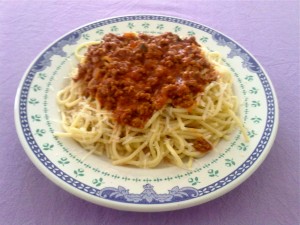
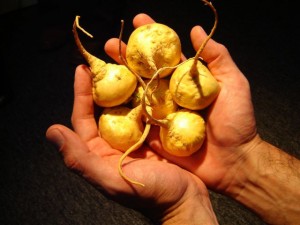
 One study centered on coconut oil, which is a fantastic oil to use for cooking and baking, in shakes, and when topically applied, is a detoxifying agent for skin. Coconut oil is very heavy in saturated fat. It has higher saturated fat content than red meat, which by the way, has more monounsaturated fat than it does saturated. Yet, thanks to the misguided war on red meat and saturated fat, we’ve come to believe that red meat is loaded in this stuff. But I digress. A Brazilian study showed that when middle-aged women replaced their intake of canola oil with the EXACT number of calories from coconut oil, an interesting thing happened. Their HDL (good cholesterol) increased, triglycerides lowered, and they lost abdominal fat. By including more saturated fat from coconut oil in the diet, regardless of the calorie content, several markers for heart health and diabetes risk drastically decreased. I’ll bet they looked younger and more vibrant as well.
One study centered on coconut oil, which is a fantastic oil to use for cooking and baking, in shakes, and when topically applied, is a detoxifying agent for skin. Coconut oil is very heavy in saturated fat. It has higher saturated fat content than red meat, which by the way, has more monounsaturated fat than it does saturated. Yet, thanks to the misguided war on red meat and saturated fat, we’ve come to believe that red meat is loaded in this stuff. But I digress. A Brazilian study showed that when middle-aged women replaced their intake of canola oil with the EXACT number of calories from coconut oil, an interesting thing happened. Their HDL (good cholesterol) increased, triglycerides lowered, and they lost abdominal fat. By including more saturated fat from coconut oil in the diet, regardless of the calorie content, several markers for heart health and diabetes risk drastically decreased. I’ll bet they looked younger and more vibrant as well.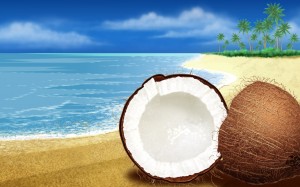 It’s unfortunate. We’ve been told for decades to avoid these foods and build our diet around “good” carbohydrates. Yet, sadly, a high carbohydrate diet can promote weight gain for most people, decrease their HDL, and increase their triglycerides; this is in complete opposition to what conventional dietary wisdom says will happen. And yet we wonder why our children are obese at such young ages, and why our health across the nation is worse than ever. Even my doctor wonders why the vast majority of her male patients don’t have HDL numbers as good as mine.
It’s unfortunate. We’ve been told for decades to avoid these foods and build our diet around “good” carbohydrates. Yet, sadly, a high carbohydrate diet can promote weight gain for most people, decrease their HDL, and increase their triglycerides; this is in complete opposition to what conventional dietary wisdom says will happen. And yet we wonder why our children are obese at such young ages, and why our health across the nation is worse than ever. Even my doctor wonders why the vast majority of her male patients don’t have HDL numbers as good as mine.
 So, eat up America! Red meat (from pasture/grass-fed cows), organic/local eggs (yes, yolk included), and organic bacon is back on the menu. Skip the stuff that comes in packages and anything that has a shiny and colorful “healthy” sticker on it. Remember this: health doesn’t come packaged like a toy in a cereal box, or down the chip isle at the organic store. All we have to do is eat REAL FOOD.
So, eat up America! Red meat (from pasture/grass-fed cows), organic/local eggs (yes, yolk included), and organic bacon is back on the menu. Skip the stuff that comes in packages and anything that has a shiny and colorful “healthy” sticker on it. Remember this: health doesn’t come packaged like a toy in a cereal box, or down the chip isle at the organic store. All we have to do is eat REAL FOOD.